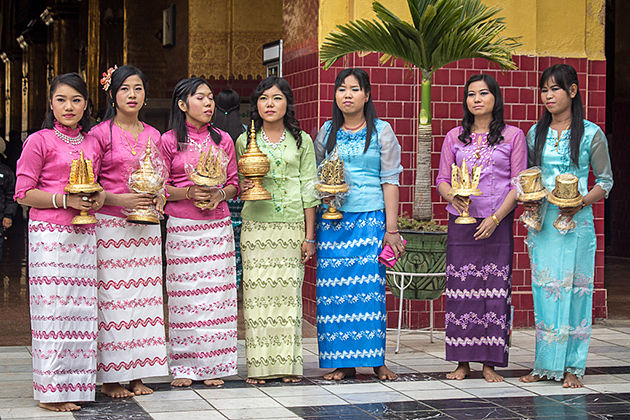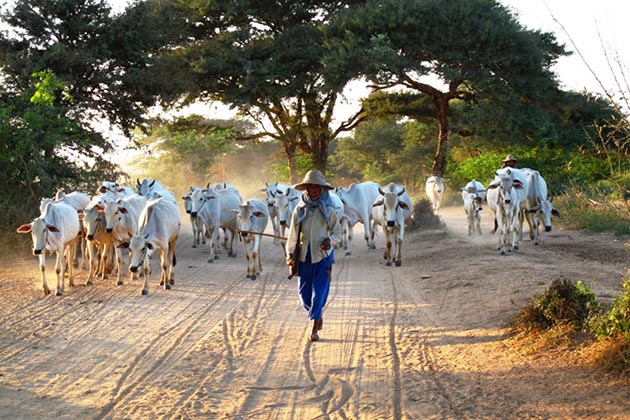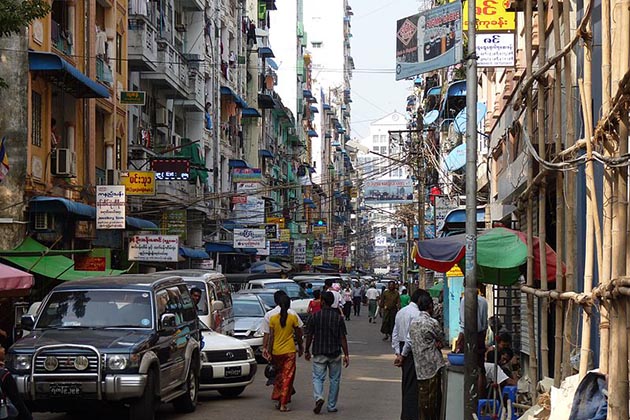Step aside from the unrevealed beauty, Myanmar culture and lifestyle will get any foreigners itching to go there. The more you know, the more you will fall in love with this nation. If you are wondering about the traditional lifestyle of Burmese people, in this article, Go Myanmar Tours delivers you with the most authentic Burma lifestyle in every aspect.
The Unique Myanmar Lifestyle on Dressing, Communicating, and Working
Once visiting the country, you will capture the image of people wearing their exquisite traditional dress. Traditional costumes of Myanmar for both men and women are skirts called Longyi and slipper (diagonal sandals). In the workplace, everyone abides this traditional wear. In society, youth can wear suits.
Myanmar is an agricultural country with the tropical climate. The basic agricultural products like some southeast counties. Rice is the main food of people in Myanmar. Their food is mostly the same as Thailand but the food is processed with more oil, pepper, and salt. Myanmar people usually use spoons and chopsticks when eating with their right hand. Knives and forks are used rarely at home in the rural area but they are more popular in the urban area and provided at hotels and restaurants for the guests.
Because of the low level of culture, environmental pollution, use of chemical fertilizers and pesticides in Myanmar remains relatively small. Therefore, agricultural products, food, vegetables, seafood... in Myanmar are considered “clean food" and high quality.
Myanmar children in the age of 9 to 13 years old often sent to pagodas or temple by their parents during the summer holidays to learn Buddhist teachings. In the age of 13, the monks will make the celebrate maturity for them.
Percentages of Myanmar who can speak and write English are very high. Students are learning English since they were six at elementary school. Most civil servants, businessmen in Myanmar are using English efficiently.
Myanmar people are more affected by the way of living and working of the British. The working time of the day is from 9 am to 5 pm with 15 to 30 minutes for a break at noon. Myanmar people do not drink wine, beer, and alcoholic at lunch.
Offering "gifts" is one of the features of Myanmar lifestyle. When visitors come to your home or office, depending on the severity of the familiar, they all are given small anniversary gifts. The foreign businessmen working in Myanmar often get gifts from a partner after meeting for the first time, signing of economic contracts, successful business and so on.
When visiting temples or pagodas in Myanmar, visitors are often invited to offer incense, flowers to the Buddha. In that case, businesses and visitors are also often offering a small amount of cash, given directly to the management of temples and pagodas, or putting in coffin merit. The monks in the temple will make a very solemn ceremony to receive the offering money and blessing peace and luck to visitors.
If the foreigners residing in Yangon, if getting out of 50 miles (about 70 kilometers) from suburban, they need the permission of the local government authority. In other cities, depending on the security situation that local officials have their own rules and regulations.
Myanmar Lifestyle In The Rural Area
So far, Myanmar economy has still based on agricultural sector with more than 60% of people living farm life in the rural area. Burmese rural-dwellers own a relatively simple life using oxen and buffalo for their farming. Since the countryside's life was not on the rapid change, the nightlife Myanmar's rural area seems doesn't exist. Every day, people wake up early and go to work. They use motorbikes and trishaw as the main means of transportation. Nowhere on the street could you hear the sound of car roaming around the pedestrians. In every corner of the street, the lifestyle of Burmese people in the rural who live in the rural performing no rushing. They still live there, regardless of the low-pace development and many shortages, the people seem to satisfy with their life. The main water resource to the people comes from rivers, lakes, and rain. Up to now, Burmese people keep containing water from the heavy rain inside the box for daily usage. In their spare time, Burmese people often visit their neighbors, relations, and enjoy Burmese tea together. Most of the Burmese families consist of many generations with about 8 members. With more than 80% of people practice Buddhism, Burmese people appreciate the role of family and children have to take responsibility in taking care of their parents until they getting older. Normally, the son does not leave their family to other places for working until they get married.
Myanmar Lifestyle in The Urban Area
To date, there are approximately 30% of Burmese people living in the urban area. In contrast to the peaceful life of the rural area, the city-dwellers possess a life that is vibrant at day and night time. Once you find yourself in Yangon – one of the top 10 best tourist attractions in Myanmar, it is the biggest as well as the most bustling city throughout the country, you will find it modern and lively as most of the cities you have seen before. Strolling around the street, you will see the youth does not wear their traditional dress, they wear a suit and shirt instead. Notwithstanding the development, the Burmese lifestyle in the urban area is not too hustle and bustle. They keep maintaining their habit to go to the pagodas and monasteries on their holidays and birthdays. The Shwedagon Pagoda, Sule Pagoda, and Chau Htat Gyi Pagoda are three of the most outstanding relics where Burmese people go to bless for their life.




I'd like to point out a few wrong facts. Being a Myanmar, I've spent almost all of my 23 years in here.
First of all, I've never heard of the tradition of eating with the left hand. It must be quite limited to some rural region even if exists. From what I've know, the idea of the uncleanness of the right rand originally belongs to Mahayana Chinese culture.
Second of all, although the fact that percentage of Myanmar people who can speak and write English are very high, Myanmar students starts studying English since they are around six, not since the junior high schools. The truth is that the academic system of teaching English of Myanmar schools practically aren't ineffective. But, because it takes about a decade for every student, most Myanmar people just turn out to be relatively good at English.
Third of all, in urban areas, a lot of Myanmar Buddhists don't go to pagodas or monasteries. Instead, the acts of going to such places on religion-related holidays and on birthdays are very often practiced.
Dear Minn,
Thank you for your contribution to Go Myanmar Tours. We have reviewed the facts and reedited the information in the article.
Best regards,